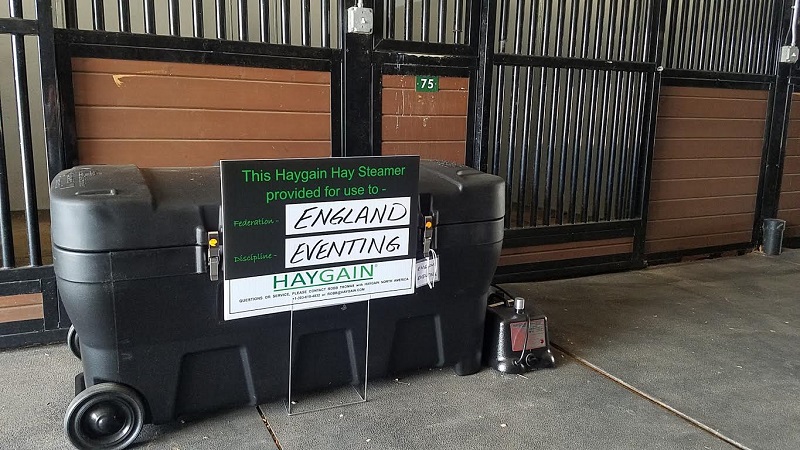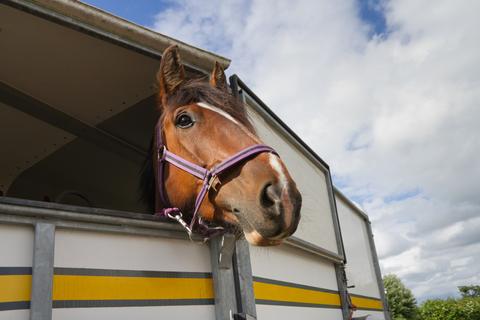Posted: 28th September 2018 | Back to news feed

The World Equestrian Games in Tryon this month has seen 550 elite equine athletes flown in from around the world to take part, with another 270 being transported overland from within the United States. This is an incredible feat of logistics, yet it represents just a fraction of the millions of horses globally who are transported every year for competition, breeding and relocation.

Regardless of the reason for transporting your horse, you will naturally want them to arrive at your destination in the best possible physical health. Horses are incredibly adaptable animals, often accepting being loaded into trailers, lorries and aeroplanes with remarkable ease, however it must be remembered that being transported long distances is not a natural process for them, and the effect on their health and wellbeing must be considered.
Evidence shows that there is no ‘right’ way to travel a horse in terms of the direction they face in – whether they travel better facing forwards, backwards or at a 45-degree angle is completely down to the preferences of individual horses. Whichever way you choose to travel a horse, you will want to bear in mind that they are trickle feeders who have evolved to spend most of the day eating, and therefore ensure that they have access to forage throughout their trip.

A hay net is most commonly used to safely provide forage for a horse when it is being travelled, as the way horses are tied up and partitioned for transport means that they cannot eat from the floor or a manger. To avoid the horse becoming tangled in it, a hay net is normally tied up quite high and therefore will be close to the horses’ face. The horse is in a small enclosed area breathing in any dust particles and allergens present in the hay and this, along with the fact that the horse is unable to fully lower their head, means the quality of the hay is paramount. If they experience any airway irritation or breathe in microbes, the horse is unable to drop its head to help expel irritants.
Steaming hay is a fantastic way to ensure that they hay will be not harmful to a horse’s health if it is tied up next to a hay net for hours on end. Steaming reduces the levels of respirable dust particles in hay and also kills any mould and bacteria present, so it will be far safer to offer a horse on a journey, however long or short.
Feeding steamed hay has another useful benefit to keep your horse healthy during transport. Horses can lose between 2kg and 3kg a day when they are transported by air or road, due to dehydration. Steamed hay will help replace some of that lost fluid versus feeding dry hay, which does nothing to rehydrate a horse.
Haygain recently sent 22 of their HG2000 Steamers to North Carolina, for the World Equestrian Games, a feat which helped Great Britain bring home the gold! Team members Tom McEwen and Piggy French are great believers in the Haygain collection, using both at home and when away.
Whether your pre-travel routine includes tyre checks, bandages, boots or horse CCTV, it really is wise to include steamed hay if you want to ensure your horse has the healthiest possible journey. Find out more about the Haygain Steamer range here:
https://haygain.co.uk/collections/equine-hay-steamers
The Equestrian Index newsfeed is compiled from articles submitted by advertising members and expresses the opinions of those members. Watsons Directories Ltd shall not be held liable for any inaccuracies or mis-statements therein.